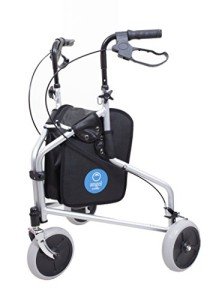
Benefits Of Rollator Walker
Add a review FollowOverview
-
Founded Date March 31, 1977
-
Sectors Jednostavna građevinska zanimanja
-
Posted Jobs 0
-
Viewed 22
Company Description
Where To Research Walking Aids Online

Walking Aids: Enhancing Mobility and Independence
Walking aids are vital tools designed to help people with mobility difficulties, allowing them to move freely and comfortably. These devices can substantially improve autonomy, improve posture, lower the danger of falls, and boost general lifestyle. This post looks into different kinds of walking aids, their benefits, factors to consider for use, and ideas for choosing the ideal aid. In addition, a thorough FAQ area addresses common queries about walking aids.
Types of Walking Aids
Walking aids been available in numerous kinds to deal with various requirements and preferences. Below is a classified list of the most commonly utilized walking aids:

1. Walking sticks
- Standard Canes: A single straight walking stick for standard support.
- Quad Canes: Canes Rollator With Storage a four-pronged base for increased stability.
2. Walkers
- Requirement Walkers: Frame-like devices that supply support on all sides, excellent for those with limited strength.
- Rolling Walkers (Rollators): Equipped with wheels, these permit users to walk with less effort and include seats for resting.
3. Crutches
- Axillary Crutches: Used under the arms; suitable for short-lived mobility issues.
- Lower Arm Crutches (Lofstrand Crutches): Designed for long-lasting use, they need grip strength and are lighter than axillary crutches.
4. Wheelchairs
- Manual Wheelchairs: Require user effort to move, offering flexibility and self-reliance.
- Electric Wheelchairs: Battery-powered alternatives ideal for users with minimal arm strength.
Benefits of Walking Aids
Walking aids use many advantages that add to improved mobility, safety, and independence. Some crucial benefits consist of:
- Increased Stability: Walking aids supply extra points of contact with the ground, lowering the risk of falls.
- Enhanced Mobility: They enable movement over greater distances, permitting people to participate in social activities and day-to-day jobs.
- Pain Reduction: Properly fitted walking aids can alleviate pressure on joints and minimize pain connected with various medical conditions.
- Enhanced Confidence: Using a walking aid can improve an individual’s self-confidence, motivating them to explore their environment without worry.
- Posture Support: Aids assist maintain appropriate positioning and posture, lowering pressure on the back and mymobilityscooters hips.
Considerations When Choosing Walking Aids
Choosing the right walking aid is essential for safety and efficiency. Here are some aspects to think about:
1. Specific Needs
- Evaluate the level of assistance required for mobility.
- Consider whether short-lived or long-term assistance is necessary.
2. Environment
- Evaluate the surface and surface areas (indoor vs. Outdoor Walker) where the aid will be used.
- Ensure that the walking aid appropriates for stairs, ramps, or irregular surface areas.
3. Weight and Portability
- Evaluate the weight of the walking aid and if it can be transferred easily.
- Lightweight options are more suitable for those who might require to lift or stow the aid regularly.
4. Comfort and Fit
- Ensure the walking aid is adjustable and fits the user’s height.
- Think about grips, armrests, or seats that offer comfort for extended use.
5. Budget
- Identify a spending plan for the walking aid while considering the quality and functions necessary for the user’s safety and convenience.
FAQs About Walking Aids
1. Who should use walking aids?
Walking aids are suitable for people recuperating from surgical treatment, those with persistent discomfort, seniors experiencing balance issues, or anyone with a mobility obstacle.
2. How do I pick the ideal height for a walking aid?
When standing directly with good posture, the top of the walking stick or walker should line up with the wrist bone. A health care specialist can provide assistance during fitting.
3. Can I use a Helavo Foldable All-Terrain Walker with Seat on stairs?
While it’s usually not safe to use a walker on stairs, some walkers are designed particularly for stairs with features that improve stability. Constantly speak with a physical therapist for personalized recommendations.
4. How can I preserve my walking aid?
Regularly look for loose parts, wear and tear, and tidy the gadget according to the producer’s instructions to ensure safety and longevity.
5. Do walking aids assist with balance?
Yes, walking aids can provide the needed assistance and stability, helping to avoid falls and assist with balanced motion.
Walking aids are vital devices that empower people with mobility difficulties to preserve independence and enhance their quality of life. By comprehending the various types of walking aids, their benefits, and important factors to consider for choice, users can make informed choices customized to their requirements. Whether for short-term assistance or long-term use, the right walking aid can change everyday routines and boost total well-being.
| Type of Walking Aid | Features | Best For |
|---|---|---|
| Walking canes | Single or quad bases | Moderate support |
| Walkers | Fixed or rolling choices | Lower body weak point |
| Crutches | Axillary or forearm models | Short-term mobility problems |
| Wheelchairs | Manual and electric choices | Serious mobility constraints |
Accepting the ideal walking aid can lead to newly found liberty and a more active lifestyle, promoting self-reliance and social engagement. As always, consultations with health care experts can provide tailored recommendations to guarantee safety and effectiveness in using walking aids.